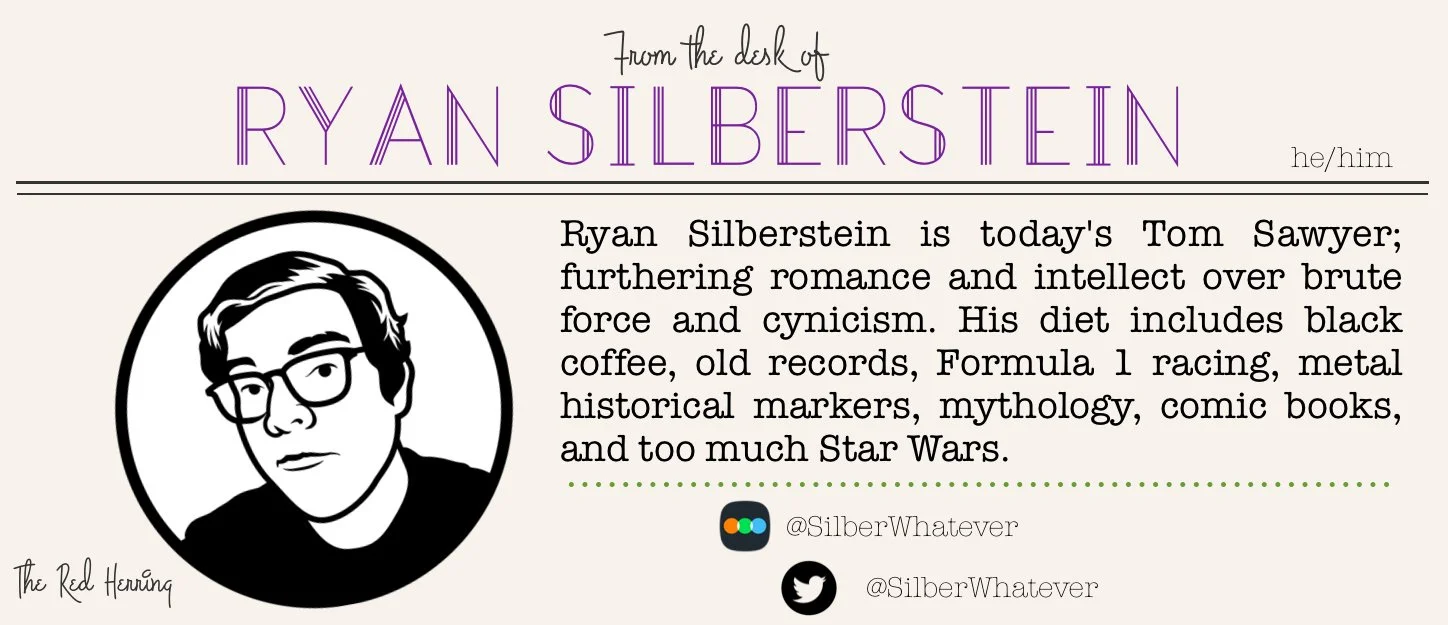TRANSFORMERS: ONE truly offers more than meets the eye
Transformers: One
Directed by Josh Cooley
Written by Eric Pearson, Andrew Barrer, Gabriel Ferrari
Starring Chris Hemsworth, Brian Tyree Henry, Scarlett Johansson
Rated PG
In theaters September 20
by Ryan Silberstein, Managing Editor, Red Herring
Entertainment for children has a few responsibilities, from teaching moral lessons, helping kids develop empathy, and of course, teaching them that facism is evil. Transformers: One enters the grand tradition of showing kids the evils of letting one entity control power–alongside such classics as Star Wars (1977), Porco Rosso (1992), and Chicken Run (2000)–by showing how it feels to learn how the world actually works. In a nod to The Matrix (1999) that feels deliberate, the film’s opening narration is given by Lawrence Fishburn as Alpha Trion, walking us through the Transformers’ creation myth and later showing our main characters how to wake up.
Set entirely on the Transformers’ home planet of Cybertron, Transformers: One shows Orion Pax (Chris Hemsworth) and D-14 (Brian Tyree Henry)–the future Optimus Prime and Megatron–toiling away as miners looking for Energon, the robot race’s primary food/energy source. Energon previously flowed freely on the planet, but since the disappearance of the leaders, including Alpha Trion, at the end of the previous war, they have needed to mine for it instead. As led by Sentinel Prime (John Hamm), Cybertron is a rigid and bureaucratic society, where the lower worker classes are unable to transform and toil away doing physical labor. After some misadventures, Orion, D-14, their former mine boss Elita-1 (Scarlett Johansson) and B-127 (Keegan Michael-Key) venture to the surface in search of The Matrix of Leadership, the key to restoring Cybertron to its former glory. Along the way, the foursome learn some hard truths about their world and the narratives they have been indoctrinated into for their entire lives.
The core of the film is the friends-to-enemies relationship between Orion and D-14, in an echo of Charles Xavier and Magneto from the X-Men comics. The two robots start the film as close friends, with Orion being optimistic and exuberant and D-14 more downbeat about moving above their station as miners. As the film goes on, D-14 becomes angrier at the status quo, and the fire inside him continues to burn as an opportunity to seize power presents itself to him. The turn from D-14 to Megatron is seeded early, and it feels like a natural extension of the character. Like Charles and Erik, we know where this relationship is headed, but there is enough investment in the friendship to make Megatron’s sudden, yet inevitable betrayal land emotionally.
Beyond that central relationship, the most enjoyable aspect of the film was the worldbuilding on Cybertron. In my experience through the films, I’ve mostly seen Transformers on Earth, with Autobots and Decepticons playing out an ancient war on a new planet. Seeing the origin of that is interesting, but getting a glimpse into the cyberpunk-inspired world that spawned these characters is also very fun. There are train tracks and roads that assemble themselves while being driven on, robotic fauna, and much of Cybertron is full of color and characters. Additionally, while Transformers is often a self-serious toy franchise, this film finds a good balance between giving the story proper weight and allowing for enough comedy to emphasize that these toy movies are supposed to be fun.
By the end of the film, Optimus Prime reminds us of his core mantra: “freedom is the right of all sentient beings,” and here, unlike in the previous films, that feels more earned. Transformers: One succeeds as a prequel because it cares about the characters at its heart.



